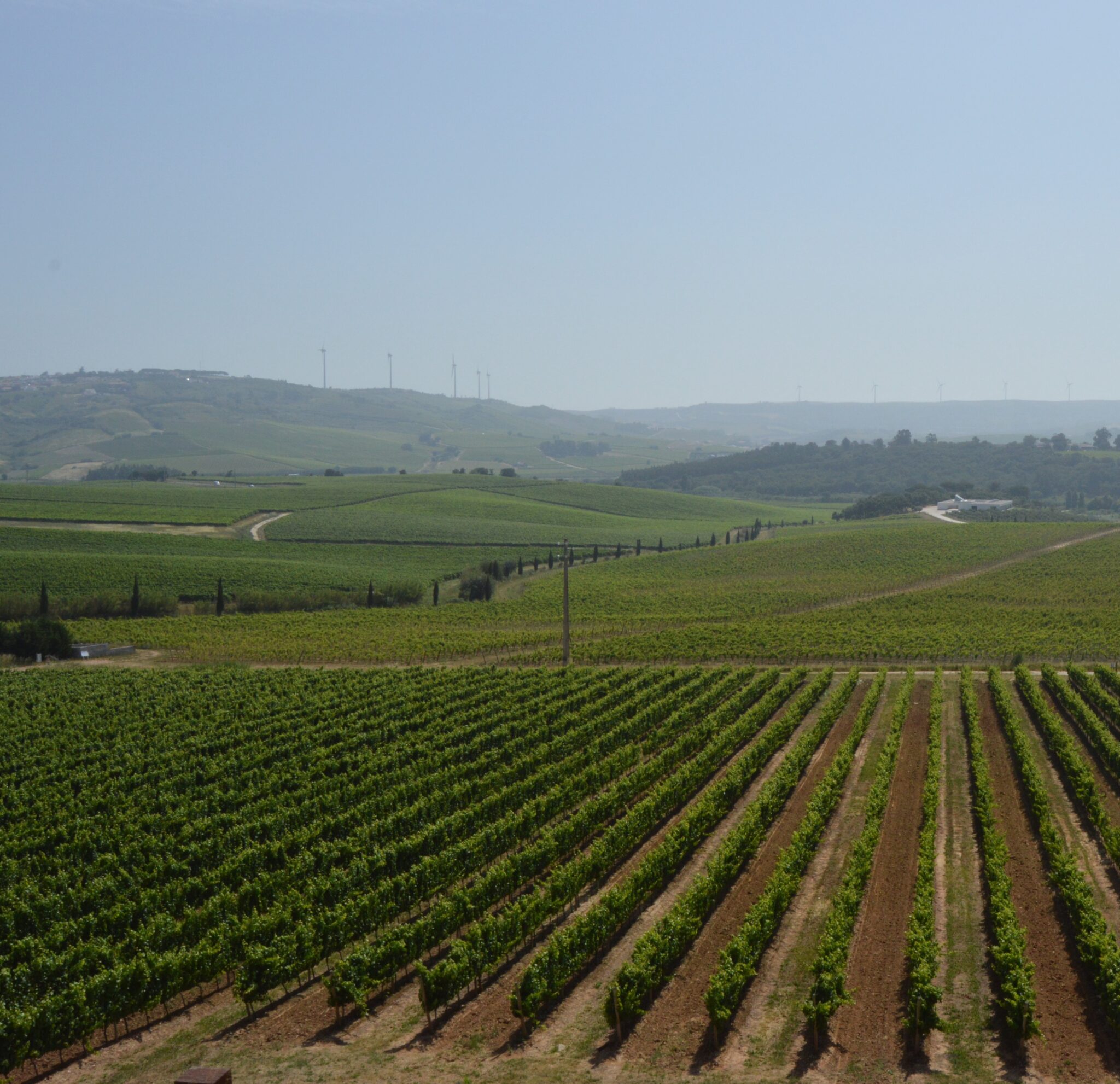West Coast
When Sea meets Land, magic happens!
Beyond Lisbon city, there is a boundless smooth landscape, a true invitation to stare at the horizon. Here you’ll find natural and cultural attractions, such as Sintra, and the Reserva Natural do Paúl do Boquilobo, both recognized by UNESCO. This region, markedly influenced by the Atlantic Ocean, has also a long tradition of vineyards and winemaking, likewise superb wines you’ll be amazed with!
Previously known as Estremadura, the West Coast region has colorful landscapes, changing through the seasons. The wavy hills are dominated by scattered white-painted villages and the windmills are particularly typical from this region North to Lisbon. It is a land with amazing sunlight and blessed with a moderate climate due to the influence of the Atlantic, creating a unique harmony between the coast and the inland.

Discover West Coast
An authentic gastronomy, with the best ingredients from both land and sea
Regarding to wine production, the West is called Lisbon Wine Region, and its long tradition in winemaking comes back since the time of Romans. In this demarcated region, we find native grapes and international varieties. As a result of this, wine producers create amazing and recognized blends. This Wine Region has a great diversity, being divided by several sub-regions, with special highlight to:
- Colares Wine boasts an incomparable history, being recognized by notable figures such as Lord Byron. This sub-region has a particularly special terroir, as a result of vines being planted in sandy soils, in strong Atlantic influenced climate and, additionally, worked by hand. In these vineyards grow portuguese native grape varieties such as Ramisco and Malvasia de Colares, and some of them close to extinction. For this reason, Colares wine is so special ! You can be sure that it is a very special heritage and is a true collector’s item.
- Bucelas, located just north from Lisbon, is a land of grape growing since Roman times. Historically a white wine made from Arinto grape, it was – presumably – mentioned by William Shakespeare in the play Henry VI, making it very popular among the English people.
- Last but not least, Alenquer, in north-east Lisbon, wine grapes produce full-bodied red wines, while white wines tend to be dry with a creamy mouthfeel.
Centuries of History left traces in the West Coast remarkable monuments
The great complex of Alcobaça Monastery reflects the influence of Cister in the West region. This monastic order was, back in the Medieval Age, the main responsible for the administrative and legal organization, as well as the agricultural flourishing of this region.
Óbidos is a magnificent medieval Town, surrounded by walls dating back to the Moorish occupation. It is known as the “Town of the Queens”, due to the royal tradition of the Kings giving the village to the Queens, as a wedding gift. Óbidos is an enchanting town, with lots of churches, tiles, paintings and gilded wood works. The whitewashed houses with their color bars and adorned with flowers complete the portrait. Before you leave don’t forget to try the famous Ginginha de Óbidos, the sour cherry liqueur!
Not far from Óbidos lies the Monastery of Batalha. It is, undoubtedly , one of the most beautiful examples of Portuguese and European architecture. Its construction took over 150 years, with several adjustments made to the initial project, resulting in a vast monastic complex with gothic, manueline and renaissance style.
Located in the hills nearby Lisbon, Sintra is a magical place and its monuments reflect this mysticism! Also known as The Mountain of the Moon, UNESCO has recognized it as Cultural Landscape. In Sintra, Romantic arquitecture combines with exotic gardens in a swirl of fairy-tale styles. On the top of the hill, the National Palace of Pena is a fabulous romantic palace and one of the greatest landmarks of this town. Other monuments with equally stuning beauty deserve a visit, such as Palace of Monserrate, the Moorish Castle, Sintra Palace or Regaleira Estate, for example..
A green and blue coast
Beyond Lisbon city, there’s a great natural world where everything is mildness and even the orography is itself an invitation to stare at the horizon. Here you will find several natural parks, such as Sintra-Cascais Natural Park and Reserva Natural do Paúl do Boquilobo, which is a UNESCO Biosphere Reserve. This is a fertile region and here farms and vineyards produce an important part of the country’s fruits, vegetables, and wines.
Mystery shrouds Sintra’s area and even the climate is different there. The lush green landscape is impressive: the Mediterranean and Northern flora were match here with hundreds of exotic trees and flowers in a truly unique setting of gardens, parks, and forests.
Other important natural attractions include the magnificent Jurassic sites in Lourinhã, Lines of Torres Vedras (temporary lines of fortifications), built on the order of the Duke of Wellington to defend Lisbon from Napoleon troops, and thermal baths of Vimeiro and Caldas da Rainha,


